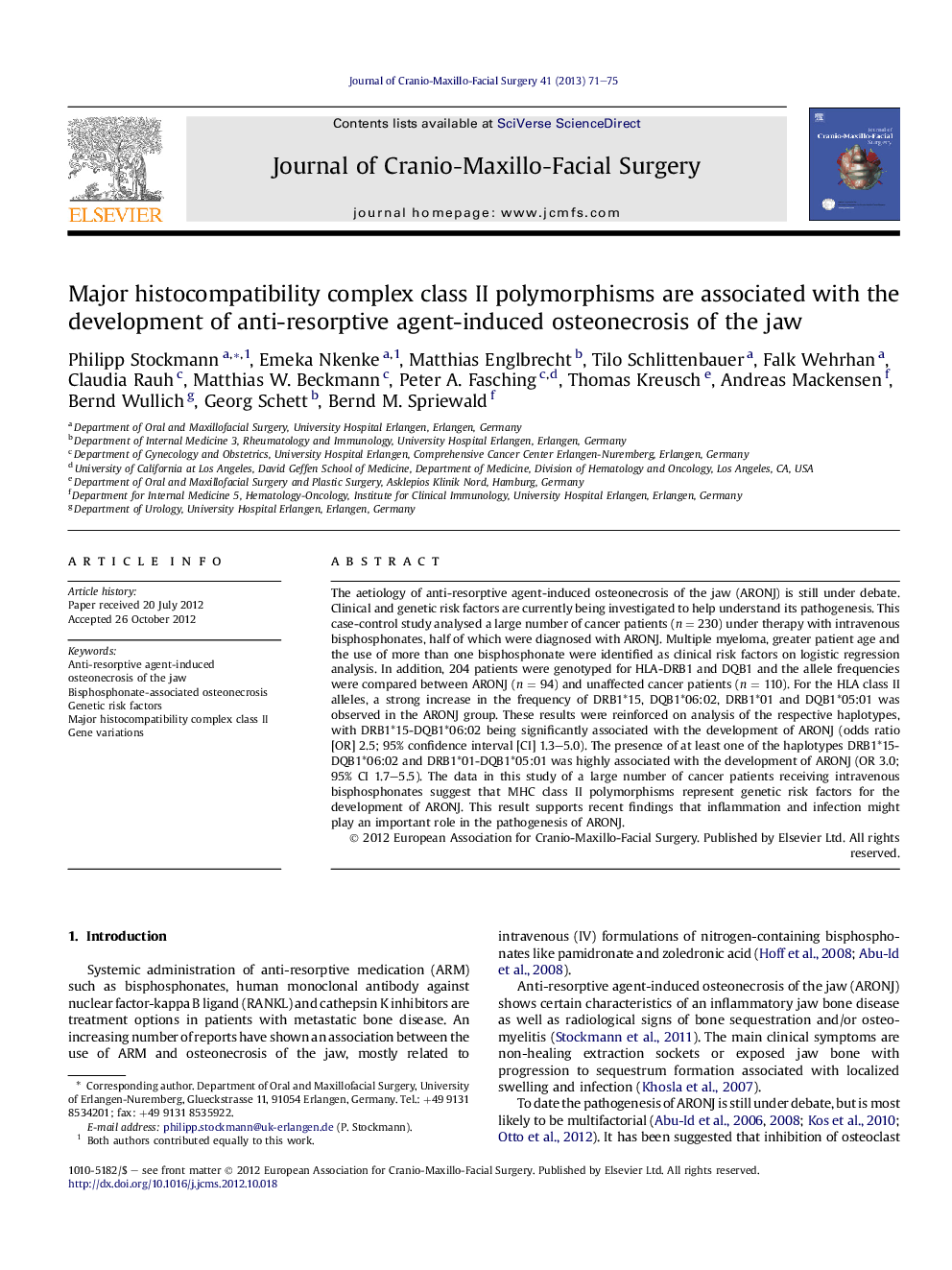| Article ID | Journal | Published Year | Pages | File Type |
|---|---|---|---|---|
| 3143232 | Journal of Cranio-Maxillofacial Surgery | 2013 | 5 Pages |
The aetiology of anti-resorptive agent-induced osteonecrosis of the jaw (ARONJ) is still under debate. Clinical and genetic risk factors are currently being investigated to help understand its pathogenesis. This case-control study analysed a large number of cancer patients (n = 230) under therapy with intravenous bisphosphonates, half of which were diagnosed with ARONJ. Multiple myeloma, greater patient age and the use of more than one bisphosphonate were identified as clinical risk factors on logistic regression analysis. In addition, 204 patients were genotyped for HLA-DRB1 and DQB1 and the allele frequencies were compared between ARONJ (n = 94) and unaffected cancer patients (n = 110). For the HLA class II alleles, a strong increase in the frequency of DRB1*15, DQB1*06:02, DRB1*01 and DQB1*05:01 was observed in the ARONJ group. These results were reinforced on analysis of the respective haplotypes, with DRB1*15-DQB1*06:02 being significantly associated with the development of ARONJ (odds ratio [OR] 2.5; 95% confidence interval [CI] 1.3–5.0). The presence of at least one of the haplotypes DRB1*15-DQB1*06:02 and DRB1*01-DQB1*05:01 was highly associated with the development of ARONJ (OR 3.0; 95% CI 1.7–5.5). The data in this study of a large number of cancer patients receiving intravenous bisphosphonates suggest that MHC class II polymorphisms represent genetic risk factors for the development of ARONJ. This result supports recent findings that inflammation and infection might play an important role in the pathogenesis of ARONJ.
